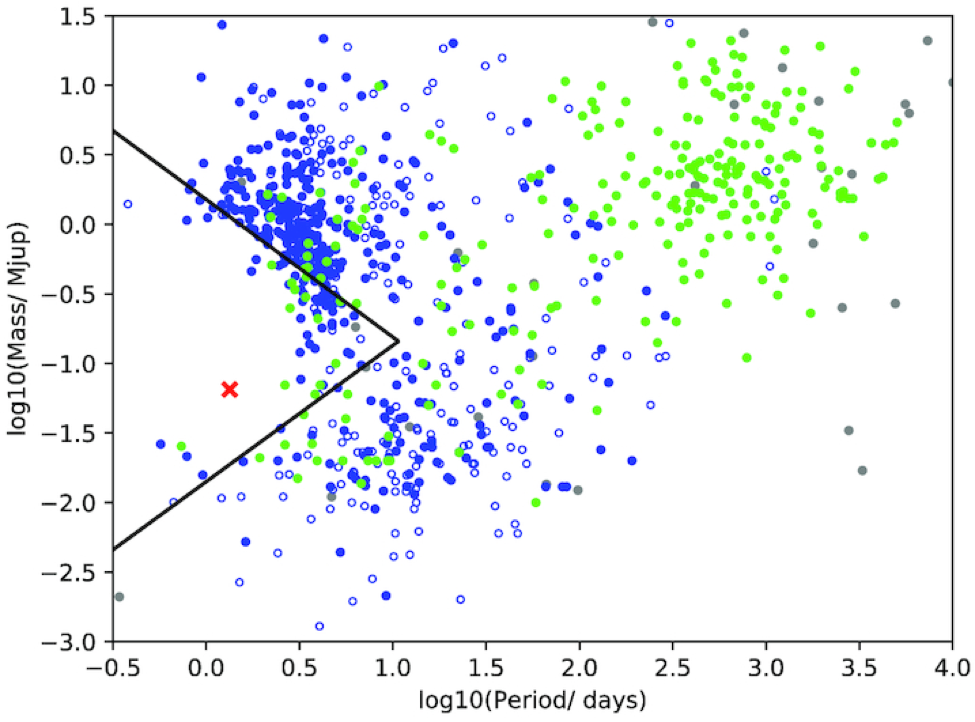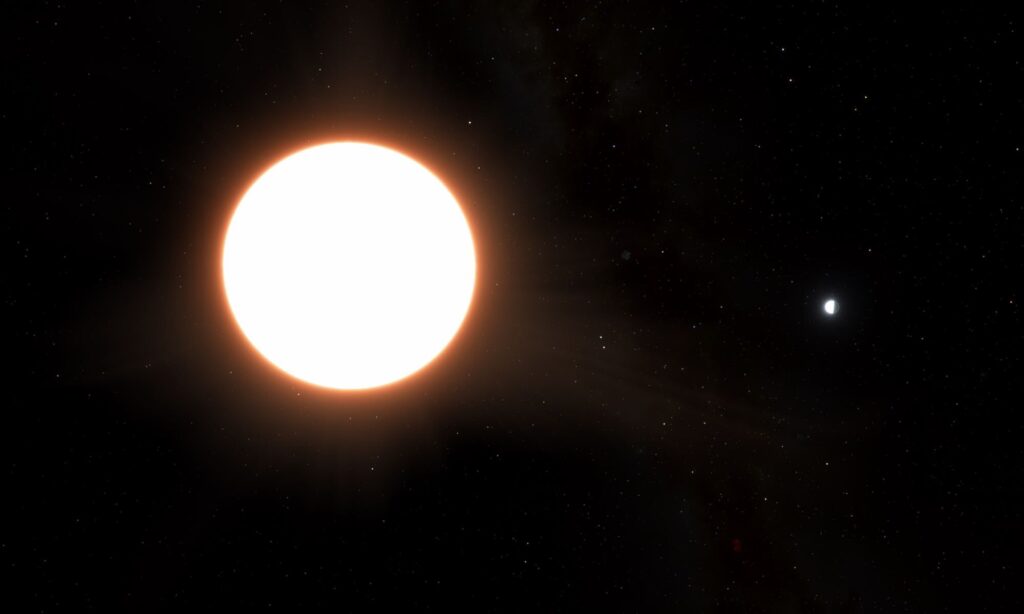An international team of researchers explained the mechanism of atmospheric preservation on the exoplanet LTT 9779 b. Its orbit takes place in the so-called hot Neptune Desert.
Mystery of the hot Neptune Desert
Astronomers have long noticed one feature in the distribution of exoplanets. In the regions close to the stars (where the period of orbit is less than four days), there are practically no planets the size of Neptune — only large gas giants or barren super-Earths without an atmosphere.

According to one of the most popular explanations of this phenomenon, the shortage of hot Neptunes can be explained by the rapid loss of their atmosphere under the influence of radiation from the parent star, which eventually leaves them with only a rocky core. As for the larger gas giants, it is believed that they hold the gas envelope better due to their more powerful gravity.
The exoplanet which lived
At the same time, astronomers are aware of several exceptions that do not fit into the specified sequence. One of them is LTT 9779 b. It is an exoplanet orbiting a yellow dwarf located 260 light-years from the Sun. Its mass is 29 times that of the Earth, and it has an atmosphere that has been confirmed by astronomers. At the same time, the orbit of LTT 9779 b passes at a distance of only 0.01679 AU (2.5 million km) from its star. The exoplanet makes one orbit in 0.8 days.

Given the great age of the system, for a long time scientists explained that the atmosphere of LTT 9779 b was preserved by the fact that it had only recently migrated to its current position. However, now they have a different explanation for the phenomenon. According to researchers from the University of Warwick, it’s all about its star. Observations made by the XMM-Newton telescope have shown that the rotation velocity of the luminary is about 1.06 km/s, and it takes about 45 days for one revolution. For comparison, the Sun’s rotation velocity is 1,997 km/s, while the hottest stars often rotate faster than 100 km/s.
The higher the rotation velocity of a star, the stronger the magnetic fields it creates. In turn, strong magnetic fields enhance X-ray radiation, which has an active effect on the atmospheres of planets, causing their evaporation. According to the researchers, the main reason for the survival of LTT 9779 b is that the exoplanet formed around an abnormally slow rotating star. The measurement results indicate that it emits fifteen times less X-ray radiation than a luminary of its age should emit.
An additional factor that contributed to the survival of the exoplanet was its atmosphere. It has an extremely high metallicity, and heavy molecules are more difficult to knock out into space than lighter ones. In addition, it has a high albedo, reflecting part of the star’s radiation.
According to https://phys.org
Follow us on Twitter to get the most interesting space news in time
https://twitter.com/ust_magazine
